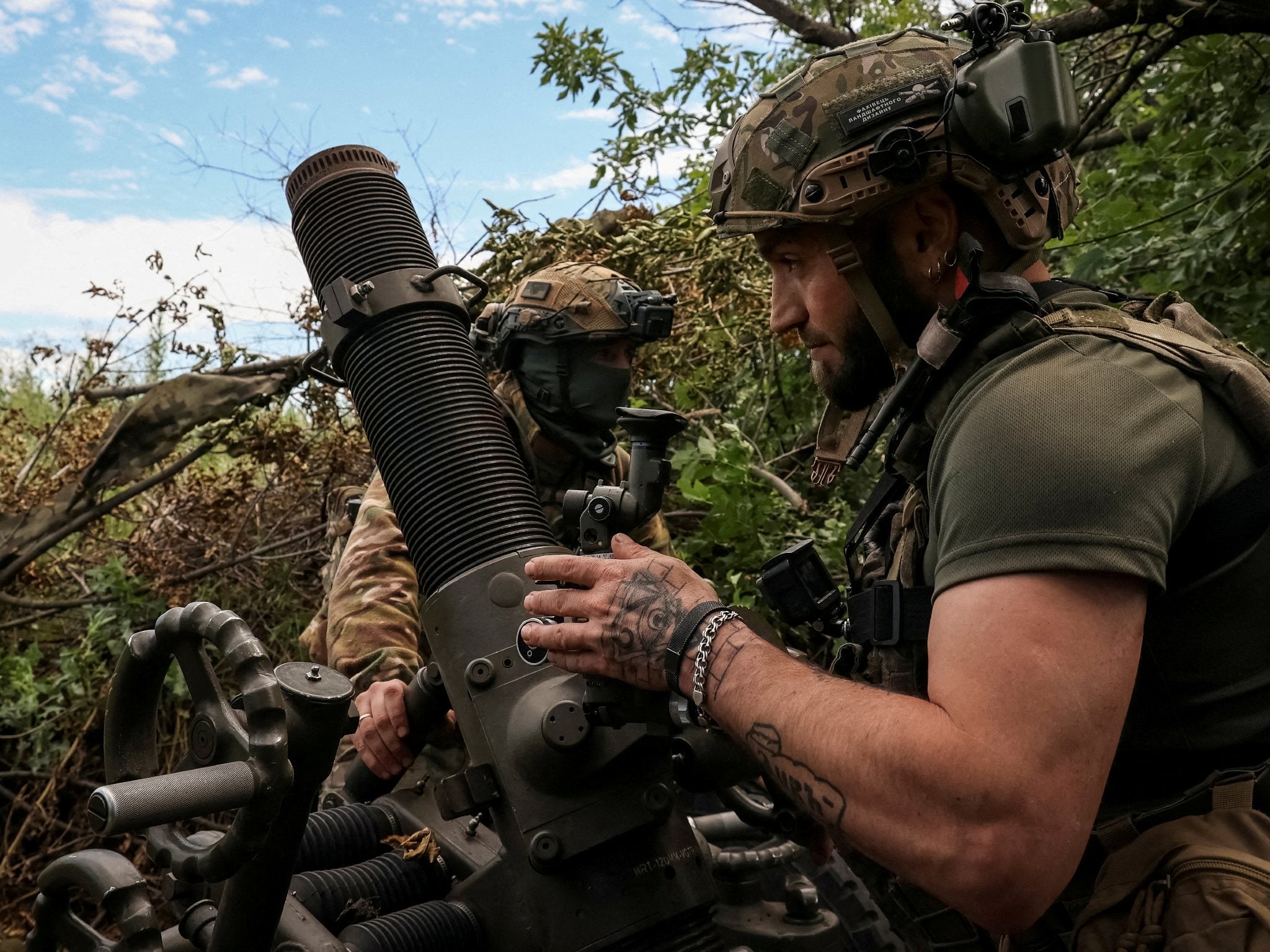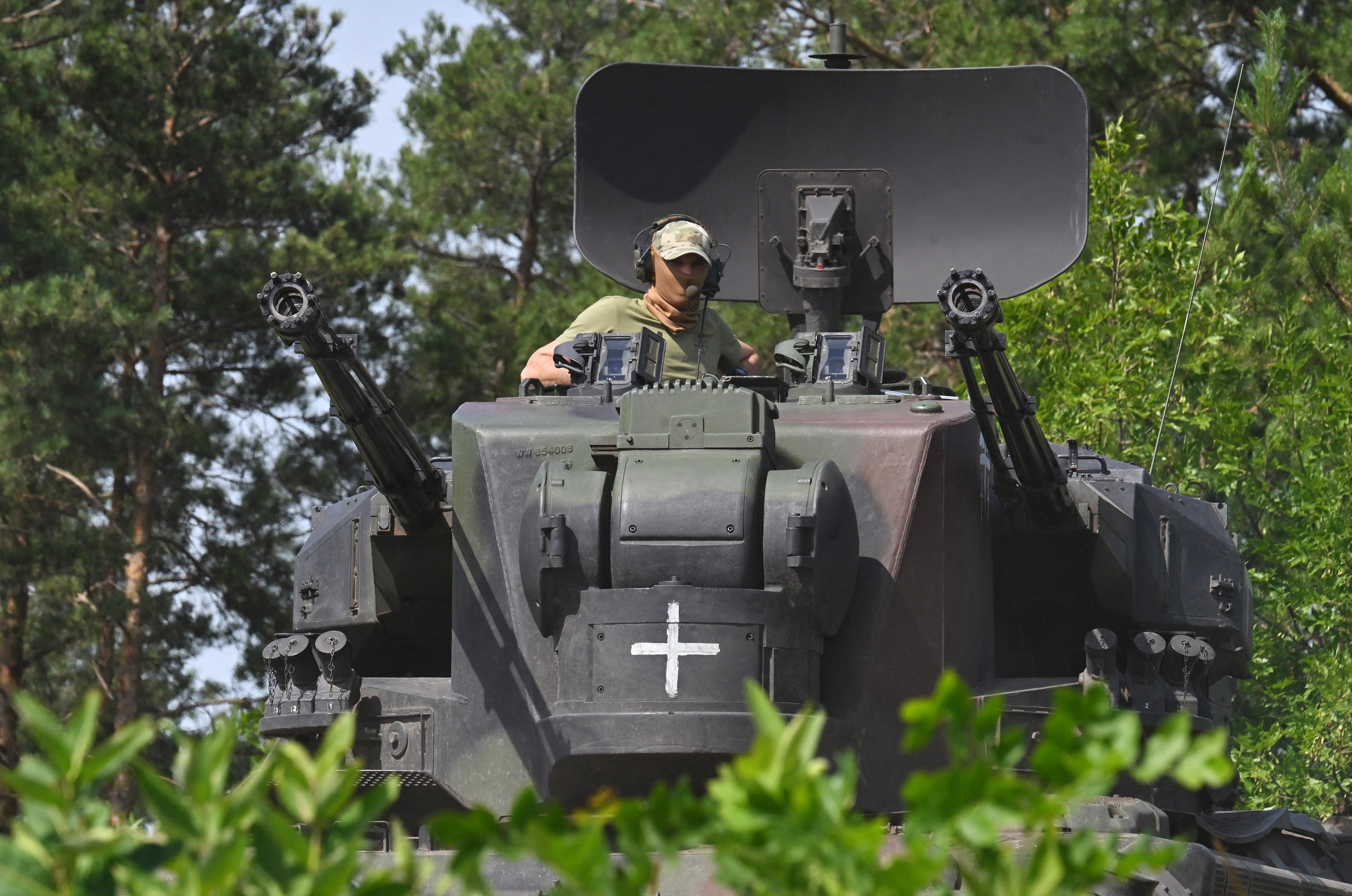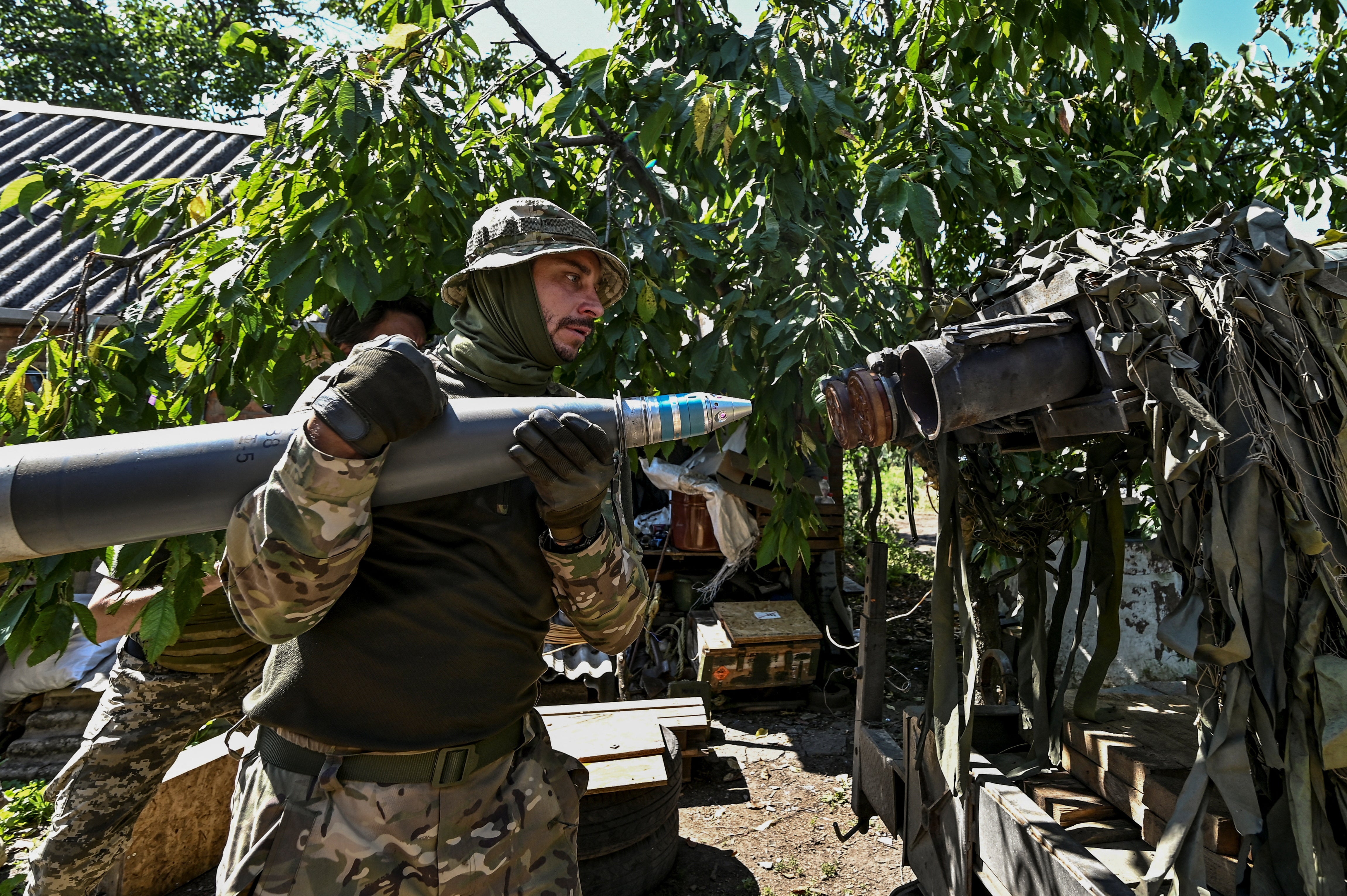Even Putin admits Ukraine has stepped up attacks on Russia’s forces – but progress will be slow
Ukrainian officials are cautious over the fresh push in their counteroffensive but say steady progress is being made in the south and east, writes Askold Krushelnycky from Kyiv

Ukraine is believed to be pushing hard to punch through heavily fortified Russian defences in the country’s southeast – with even President Vladimir Putin admitting that “hostilities have intensified significantly”.
Kyiv is seeking to move towards the coast of the Sea of Azov – to break through the land corridor between Russia and the Crimean Peninsula, illegally annexed by Moscow in 2014. The aim would be to split Russian forces into two and cut supply lines to units farther west. Ukraine’s military has said that Russia was launching intense artillery and aerial bombardments to try and slow down Kyiv’s troops.
Ukraine’s deputy defence minister Hanna Maliar has said that her country’s forces are advancing toward the city of Melitopol in the Zaporizhzhia region, which sits near the Sea of Azov. Russia’s Defence Ministry also reported attacks on the town of Robotyne, around a two-hour drive from Melitopol, with Kyiv’s troops appearing to have broken through some Russian defensive positions in the area.
Pentagon officials, cited by US media, have suggested the fighting, in the southern Zaporizhzhia region, indicated that Ukraine had finally begun the “main thrust” of its counteroffensive, with thousands of Ukrainian troops said to have been thrown into the fighting.
However, Ukrainian officials have sought to keep their cards close to their chests. The Independent spoke to two officials – an adviser to Ukraine’s defence minister and an adviser to the presidential administration – about the latest fighting and asked if it indeed heralded Ukraine’s “big push” that some have suggested.
Both said that there has been heightened fighting in the area around the town of Orikhiv, not far from Robotyne, in recent weeks and that some gains had been made in recent days. There have been particularly fierce battles around Robotyne and Novopavlivsk, west of Orikhiv.

Further east, Ms Maliar wrote on Telegram, Ukrainian forces were “gradually moving forward” near Bakhmut, and that fighting was continuing in the nearby settlements of Klischiivka, Kudriumivka and Andriivka. Moscow’s airforce has also increased missions around Bakhmut and further north in the Kharkiv region around Lyman and Siversk. Ukrainian president Volodymyr Zelensky hailed “very good results” on the battlefield in an address late on Wednesday evening, promising to give details later. On Thursday, he visited the city of Dnipro, along the Dnipro River to the north of Zaporizhzhia, meeting with military commanders to discuss air defences, ammunition supplies and regional recruitment.
The defence minister adviser who spoke to The Independent said there had been “persistent, and steady advances” – but not rapid – in recent days.
Vladimir Rogov, an official appointed by Moscow in occupied southern Ukraine, has claimed this week that Kyiv’s forces are equipped with about 100 armoured vehicles, including German-made Leopards and American-made Bradley combat vehicles.
The presidential adviser said that Ukraine was still building up its forces and pointed to a recent German government assessment that Ukraine had achieved parity with Russia in the important area of artillery power. In a month or so, he said, Ukraine should actually be in a position of superiority with respect to artillery and he hinted that could coincide with a “big push”.
Russia has far more artillery pieces than Ukraine, which gave Moscow a vast advantage in the first months of its invasion last year. But Russia’s superiority has been whittled away by the provision to Ukraine of advanced, precision artillery systems and missiles by its Western allies.
Both sources said that one of the Ukrainian military’s key strengths was flexibility and agility so that if the operations in Zaporizhzhia region, or elsewhere, revealed Russian weaknesses, Ukraine would swiftly take advantage of them.

They said that Ukraine had still used only a fraction of the thousands of fresh troops that have been trained by Western allies, many of them by and in Britain. or the new Western-supplied weapons, including tanks and other armoured fighting vehicles, essential to spearhead any major breakthrough.
On the Russian side, Mr Putin claimed in St Petersburg on Thursday that Ukrainian attacks had been beaten back, but the admission of the surge in attacks is significant enough. Both the Russian Ministry of Defence and pro-Kremlin war bloggers have said there has been an increase in fighting around Zaporizhzhia and further east around Bakhmut.
Kyiv started a long-anticipated offensive early in June after months of preparation and training with advanced weapons systems, including cutting-edge Western tanks, artillery and missile systems, supplied by its allies.
The Russian ministry has repeatedly, and falsely, claimed to have crushed Ukraine’s June offensive, destroyed scores of tanks and killed hundreds of soldiers. It is making similar claims now that have been mostly dismissed by Ukrainian officials as well as British and other Western intelligence agencies and independent bodies, such as the Institute for the Study of War, which closely monitors the situation in Ukraine.
However, attempts to regain Russian-occupied territory will be slow, with Russia having bolstered its defences along the 600-mile front lines in the months it waited for the Ukrainian pushback.
Moscow built three rings of defence. The ground that Ukrainian soldiers have to advance over is densely sown with anti-tank and anti-personnel mines with Russia’s artillery zeroed in to saturate large areas with devastating shellfire. Ukraine has said Russia has transferred to the main battlezones a large number of modernised versions of its K-52 “Alligator” helicopters, which Kyiv admits have inflicted much destruction.
Ukrainian officials, without giving casualty figures, have said the mines and artillery have taken a heavy toll in dead and wounded and slowed down their advances.
The pace of the Ukrainian advance is being dictated, to a large extent, by the slow, dangerous and time-consuming mine-clearance operations by specialists or by armoured vehicles equipped with rollers on extended arms that are designed to detonate mines.






Join our commenting forum
Join thought-provoking conversations, follow other Independent readers and see their replies
Comments